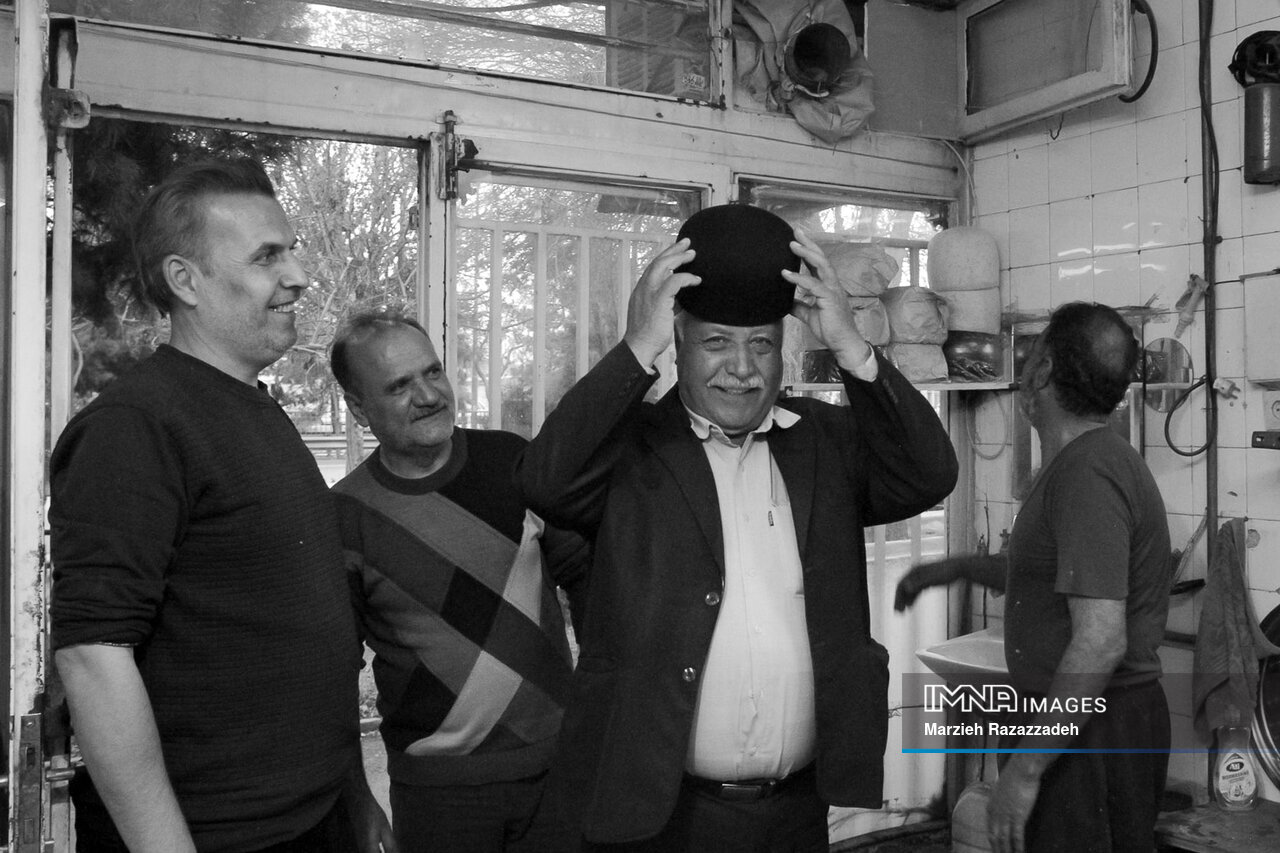Timeless art of making traditional felt hats: enduring legacy of Iran’s nomadic culture

As the first light of dawn graces the sky with hues of gold, a familiar scene unfolds in an old neighborhood of Isfahan. In a modest workshop, the master artisan Aliakbar awakens to begin his daily ritual. His hands, weathered by years of dedication, deftly navigate the intricacies of Kolah Namadi making, a craft passed down through generations.
The journey begins with the careful selection of the finest wool, sourced from sheep roaming the verdant pastures. These fibers, soft as whispers, undergo a meticulous process of carding and combing to ensure uniformity before being dyed. The dyeing process is an art in itself, requiring a delicate balance to achieve the perfect shades of black and white that characterize Kolah Namadi hats.
Under the gentle warmth of the sun, the dyed wool begins its transformation into dense, pliable felt. With rhythmic precision, Aliakbar pounds layer upon layer, shaping the material into its distinctive form. Each strike resonates with the echoes of tradition, a testament to the artisan’s skill and dedication.
Once the felt reaches the desired thickness, Aliakbar meticulously cuts intricate patterns that define the hat, his hands guided by years of experience. It is a labor of love, each cut imbued with the story of its maker. Finally, as the day fades into twilight, Aliakbar assembles the hat, carefully molding it on a wooden block.
The result is more than just headwear; it is a testament to the enduring traditions of Iran. In Isfahan, the art of Kolah Namadi lives on, cherished by skilled artisans who preserve a legacy that spans generations. Through their craftsmanship, they honor the spirit of Iran, ensuring that its rich heritage continues to thrive.
The significance of the Kolah Namadi transcends mere aesthetics, symbolizing honor and pride among Iranian men throughout history. From ancient Persia to the early twentieth century, the hat has been a cherished emblem of identity, adorning the heads of warriors and leaders alike.
Across Iran’s diverse landscape, the Kolah Namadi has found resonance among various tribes and communities. From the vibrant colors favored by the Lors and Bakhtiaris to the regal crowns of the Qashqais, each iteration reflects a unique cultural identity.
As the ages pass, the Kolah Namadi remains a steadfast symbol of Iranian heritage, woven into the very fabric of the nation’s identity. Through the hands of artisans like Aliakbar, its legacy endures, a timeless tribute to the nomadic spirit.
Leave a Comment